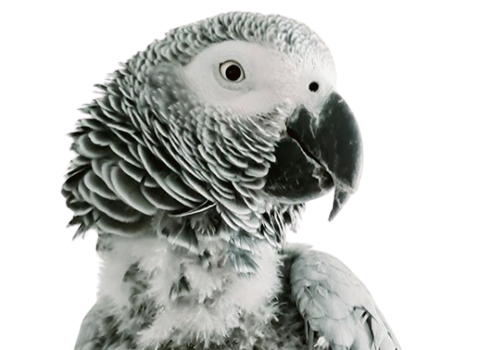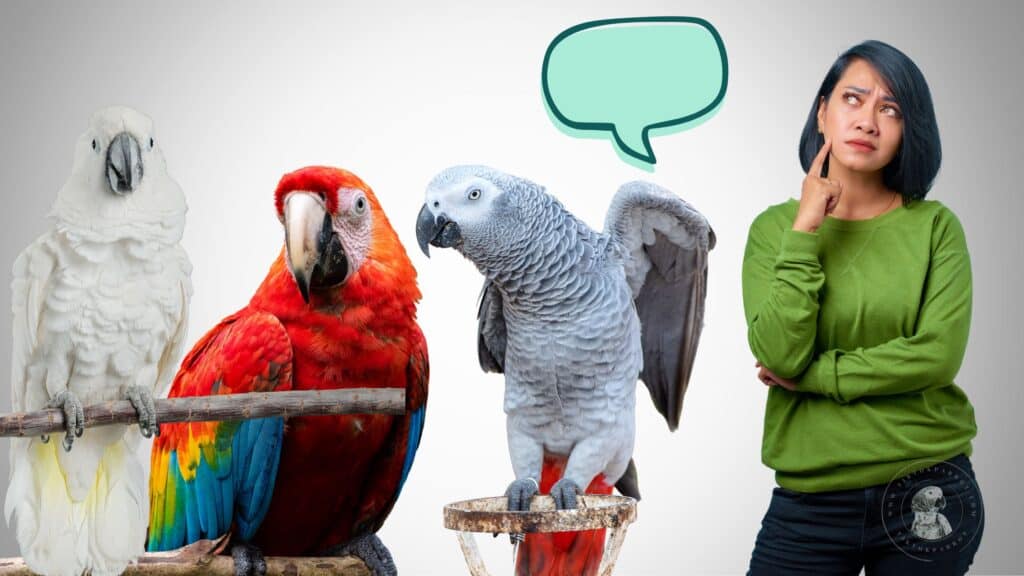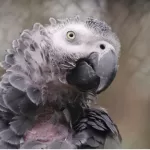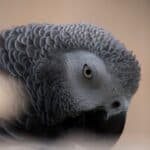So, you’ve welcomed a feathered friend into your life! Congrats! But along with the cute chirps and feather preening comes a question that has plagued bird owners for generations: clip or don’t clip?
Many people clip their bird’s wings to make sure they don’t escape plus it makes taming them much easier. Trimming or clipping the wings can save a lot of birds from flying into windows, mirrors, toilets, frying pans and especially cactus plants.
Is clipping your bird’s wings right for you? Learn the pros, cons, and safety tips for keeping your feathered friend happy and healthy. Easy to understand guide for new bird owners.
There are many bird owners that prefer not to clip the wings. Parrots that are allowed to fly definitely get more exercise. This also benefits them psychologically as well. There are some people that believe in letting their birds fly wherever they want even outdoors.
However, this is not advised and not recommended for the average bird owner. If you decide you want to clip your bird’s wings you can either do it yourself or take them to a vet. It’s easy to trim a bird’s wings after you become accustomed to it. It also can save you a lot of money in vet bills plus less trips to the vet. If you want to learn how to do it yourself, watch someone who knows what they’re doing a few times before doing it yourself.

Team Clip: Keeping Your Feathered Houdini Grounded
Let’s face it, birds are escape artists extraordinaire. One minute they’re charmingly bobbing their heads, the next they’re testing their wings against your open window (cue frantic human flailing). Clipping can offer peace of mind, preventing these heart-stopping escapes and any potential injuries from flying into windows or ceiling fans.
Plus, some argue that clipping makes training a breeze. A grounded bird might be more receptive to your attempts to teach them “fetch the tiny ball” (spoiler alert, they probably won’t fetch).
Team No Clip: Unleashing Your Inner Birdy McFly
But clipping isn’t without its critics. Imagine if someone clipped your favorite shoestrings – suddenly that daily jog feels a lot less appealing. Birds are built to fly, and clipping can hinder their exercise and natural instincts. A flightless bird might become frustrated, lethargic, or even develop feather-picking behaviors.
There’s also the potential for a bruised ego. Birds can be surprisingly graceful gliders, and clipping might leave them feeling like a rejected contestant on a bird version of “Dancing with the Stars.”
Easy steps: How to clip bird’s wings
The first thing you will need are a small pair of blunt scissors, a lightweight towel and someone else to hold the bird if you don’t want to hold them yourselves. The other person should place the towel on the back of the bird and hold them firmly but gently by the back of their head. Don’t cover the bird completely with the towel or squeeze them because that will cause their air sacs to collapse and they could suffocate.
Be sure to trim all the primary feathers. The first group is right before the wind bends approximately half way. Never trim or cut the secondary feathers, which are the feathers past the bend closer to the bird’s body. Trim both wings exactly the same length for balance. Extend the wing by gently grasping the edge. Never touch the tip of the feathers. Before trimming take a close look at the wing to be sure it’s not still growing in.
The “blood feathers” are usually swollen and are a purplish color at the lower shafts. This is a sign they is a reservoir of blood in them. If they are cut or broken, they will bleed profusely. The bleeding usually stops by itself. However, if it doesn’t you can stop the bleeding by apply gentle pressure or using cornstarch.
After the bleeding stops, quickly remove the shaft of the feather. If the shaft remains, it will start to bleed again later. If you can’t stand to remove a feather, a vet can do it. If you can do it either you or your helper should restrain the bird and remove the feather.
Get as close to the bird’s body as you can using a pair of pliers or tweezers. Gently hold the area towards the base of the feather so when the feather is removed it doesn’t tear the bird’s skin. Remove the feather in one movement. After the feather is removed, the bleeding will automatically stop.
After the bird’s feathers have been trimmed, be sure to keep perches low over carpeted areas until the bird adjusts to their newly trimmed feathers. Until they adjust, birds will sometimes crash to the floor, which can result in knee or head injuries.
Many birds also need their nails trimmed regularly. If their nails become overgrown, they will snag clothing or they will have difficulty in walking or climbing. To trim their nails you will need a pair not guillotine or notched style nail clippers. You can find these in any pet store. If the nails are overgrown only snip off the tips. The vein is visible especially in bird’s that have light colored nails.
Wait approximately two to three weeks before trimming the nails again. This gives the veins time to recede so you can trim the nails with nicking the vein. If while trimming the nails you nick the vein, you can stop the bleeding by using styptic powder and applying it with your finger. Styptic works by using a chemical burn process so be sure you never apply it to an area where the bird can get to it and taste it.
If you have a bird that has a beak that has grown long and it is hard for them to eat or groom themselves give them something hard to chew. This wear down the tip as they chew.
For birds such as budgies, an overgrown beak means a serious medical condition for example an enlarged liver. In this case, you should consult your vet.
Beaks should only be trimmed when everything else fails. Your vet may advise on using a sanding tool, however, that will terrify your bird. You can also try to clip the beak. When clipping the beak only slightly and barely trim the area to avoid hitting the vein. If the beak bleeds, it can be difficult to stop and the open beak can be prone to infections.
There are pros and cons to clipping a bird’s wings, and the decision depends on your specific situation and your bird’s well-being. Here’s a breakdown to help you decide:
Pros of clipping:
- Safety: Clipping can prevent escape through open doors or windows and injuries from flying into windows, fans, or other hazards.
- Training: Some believe clipping can make training easier as the bird relies more on you.
Cons of clipping:
- Physical and mental health: Birds are meant to fly, and clipping can restrict exercise, lead to boredom, and cause frustration.
- Dependence: Clipping may not strengthen your bond, and a clipped bird might feel helpless.
- Alternatives: Bird-proofing your home and providing supervised out-of-cage time can manage flight risks.
A Bird-Wise Decision
Ultimately, the decision is yours, but here are some things to consider:
- Your home environment: Is it escape-proof? Can you supervise playtime?
- Your bird’s personality: Are they a curious explorer or a happy couch potato?
- Talk to your avian vet: They can assess your bird’s health and temperament and offer personalized advice.
Remember, there’s no one-size-fits-all answer. You can always opt for a partial clip, allowing for some fluttery fun but not a full-on avian airshow.
So, clip or don’t clip? Just choose what keeps your feathered friend happy, healthy, and maybe even ready to teach YOU a thing or two about the joy of flight (from a safe distance, of course). Happy birding!
My Closing Thoughts
I would say caring for your feathered friend involves a delicate balance between safety and freedom. Whether you choose to clip your bird’s wings or let them fly freely, remember that your ultimate goal is to ensure their happiness and well-being.
So, armed with scissors, towels, and a heart full of dedication, you’re now better equipped to provide a safe, nurturing environment for your bird. Together, you can enjoy a journey filled with joy, learning, and unparalleled companionship.
If you found this blog helpful, It would be great if you could share it with your family and friends who might find it useful as well.
You might like to read these as well 🙂
Parrot Care Tips! Easy & Simple To Understand
Decoding Parrot Minds: Bird Behavior, Emotions And Intelligence
Why an African Grey Parrot Bites and What to do
Signs of Illness in an African Grey parrot
Things you need to know about an African Grey Parrot’s Cage
Talk Birdy to Me: Find Your Perfect Parrot Match!
For more useful content about African grey parrots, you can subscribe my site with your email to get notification upon publishing a new blog, the subscribe box you can see on the right side of this page. Also if you get an alert on your web browser while browsing my site, allow it and that will also give you an alert whenever I publish a new blog. 🙂
Stay safe and much love!

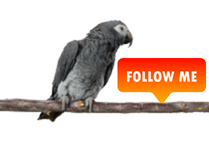
Hey there! 🐾 Looking for top-notch pet supplies or anything on Amazon?
Support our site by shopping on Amazon through our this referral link, it will not cost you extra!
Your purchases on Amazon can help us continue providing valuable content.
Thank you for your support! 🛍️
